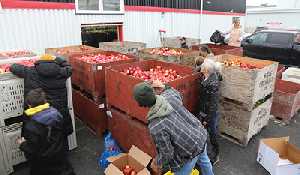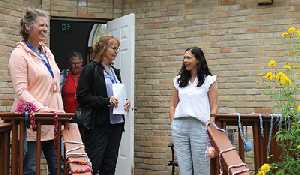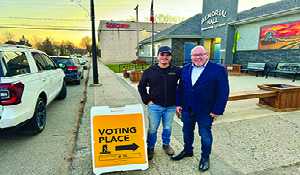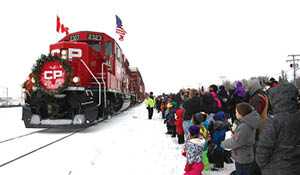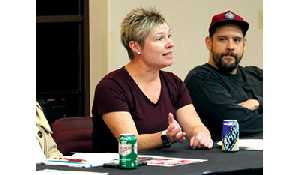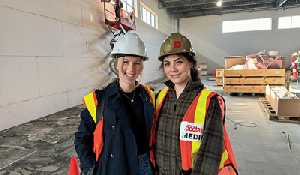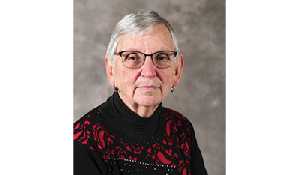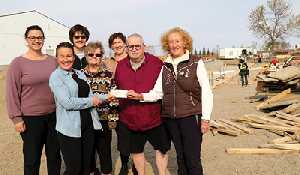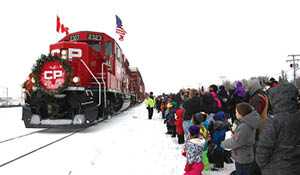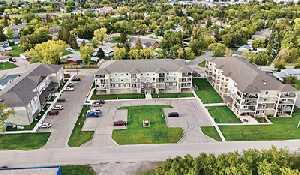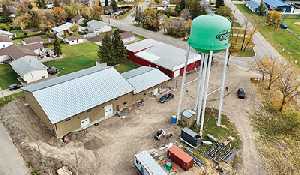Extra precautions: Enbridge focused on Covid-19 safety
June 9, 2020, 1:49 am
Kevin Weedmark
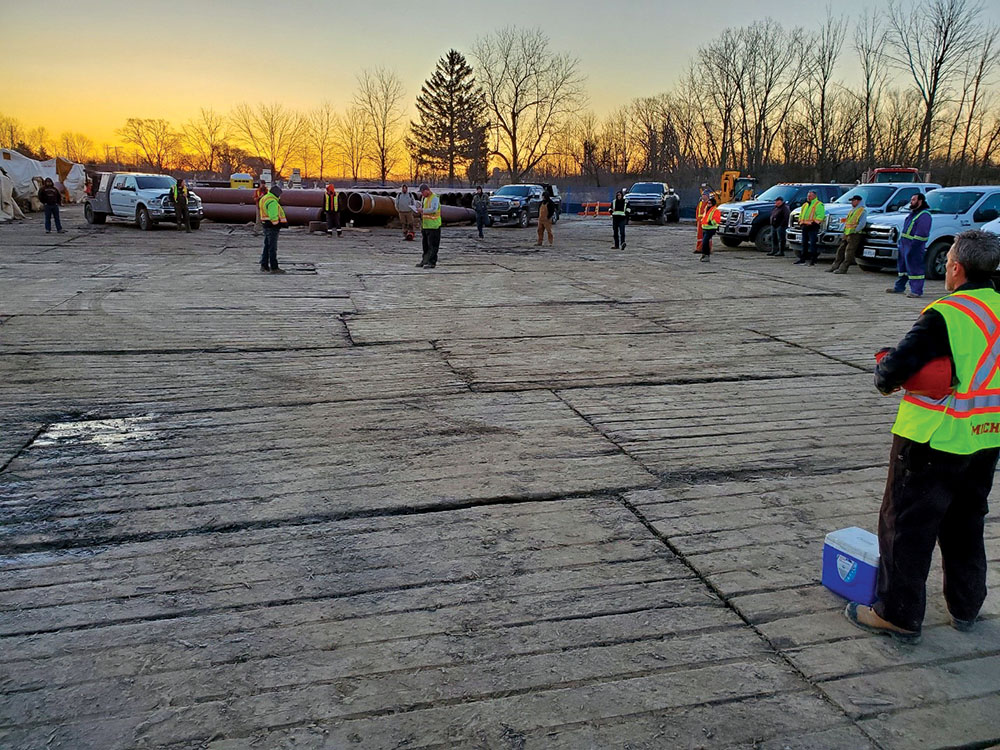

Al Sawatzky, Manager of Pipeline Construction on Enbridge’s Line 3 replacement, and Bill Pilkington, Senior Safety Co-ordinator with Enbridge, told the World-Spectator Friday that there will be a strong focus on safety as a crew of 250 moves into the Moosomin area over the next few weeks to complete surface restoration work on the Line 3 replacement project in southeast Saskatchewan and southwest Manitoba.
Sawatzky said there are people starting to move into the area for the project.
“There are a few people around right now in Moosomin,” he said. “I have my construction manager, Lee McKenzie, out there right now. We are just looking at defining the scope of work and we are actually doing some weed control right now as well with a couple small crews that we use out of Saskatoon.
“So we do our spring break mitigation. That is to make sure the right-of-way hasn’t eroded from wind or water, and it really carried well over the winter. Banister has one or two guys out there now and there are going to be more. They are probably going to start delivering equipment by the weekend and into next week.
“We have a kick-off meeting, which will be a different kind of kick off with social distancing. We are going to get the biggest room in Moosomin and there won’t be as many there as usual, but it’s a formal thing that we have every time we go back to work.
“It will be a smaller crowd and we will be separated but we plan on having a kick off meeting. It’s kind of a social event but it’s also where we get the management up to speed on where we’re at. A big part of that kick off meeting will be on the Covid-19 protocol we’re going to roll out. We’ve developed protocols over the winter.”
He said more staff will start rolling into the area starting this Friday, June 12.
“June 12 is when we’ll have some people start coming in and it will ramp up from there,” Sawatzky said. “There won’t be 200 people show up the first day—it’s a gradual buildup.”
Sawatzky said Enbridge had a project in Sarnia, Ontario over the winter where Covid-19 protocols were developed and fleshed out, so the company has that experience under its belt as it prepares for the next project in Moosomin.
“We developed protocols in Sarnia so we could carry on with construction. Between myself, Bill (Pilkington) and the site safety there, we developed the protocols. We were actually out ahead of it in many ways. There was some guidance for us but there was no formal document. We knew you couldn’t be within six feet, we knew we needed to be able to clean your hands and tools. We knew the office trailers needed to be cleaned very thoroughly. We started with that and build it from there.”
“Back in March we had no direct protocols but we were guided by provincial authorities at that time,” says Pilkington. “In Ontario the provincial health authority was saying that this is what we needed to do and that is what we implemented at our sites. Since then, the Enbridge health services department and safety department corporately have got together and come up with Enbridge-specific protocols that meet or exceed all provincial requirements in all the provinces that we’re working in currently from B.C. to Ontario.
“It starts with a questionnaire before a worker shows up at site. We send him a questionnaire and it asks the basic questions based on provincial health assessments. Have you travelled outside the country? Have you been in contact with known a COVID-19 case? Do you have any of these symptoms? And the questionnaire has been constantly changing and been adapted to the information as it’s learned by Health Canada and provincial authorities, so it has changed. The COVID-19 protocol starts with that—everybody has to submit that to us prior to showing up at site so we know before they even get there that they are healthy, not showing any symptoms, they haven’t been in contact, they haven’t travelled, things like that.
“For this Line 3 work, we have told our contractor to set up temperature screening for all the workers coming to Moosomin, for example. So they filled out the health assessment before they arrived, they’ve said they’re healthy, now they’re coming to town, and before they start work and every day they come to work during this project, they will be temperature screened by our medics.
“If they do have a temperature, they will not enter the worksite and the focus will be on getting that worker care.
“If they do have a high temperature then they’ll be asked to isolate. There are a number of reasons for having a high temperature, so our temperature screening protocol addresses those kinds of things. If they come to work and have a high temperature, they will be sent back to isolate and Banister will then follow their protocol for getting this worker care.”
Most workers from Sask.
The vast majority of workers on the Moosomin project will be from within Saskatchewan, not from other jurisdictions where infection rates are higher, said Sawatzky.
“Of the workers that are coming to the project, 80 percent will be out of the Saskatchewan union halls, labourers, operators, teamsters—there are no welders on this one—so the vast majority are Saskatchewan union hall members.”
Because Banister is an Alberta company many vehicles will have Alberta plates, but the operators will be from Saskatchewan.
Sawatzky said there will be full-time staff on site overseeing COVID-19 precautions.
“We told Banister to have a full-time COVID-19 co-ordinator, so that would be someone that just looks over the whole spread to make sure everybody is following the protocols, social distancing, cleaning, getting their temperature checks in the morning, helping the full-time temperature screening person with their tools in the morning make sure everybody gets their temperature checks, and if there was someone with a fever find out why and then take care of that. The other commitment we made as well is we’re going to have a full-time Enbridge COVID-19 co-ordinator, so there will be two dedicated people whose full-time job it is to help us manage through the COVID-19 rules and protocols.
“We’ve also hired a full-time security guard above the normal security on our project, so this person is just another layer of protection. We want to make sure that everybody is following our protocols, and even sometime a local will turn in the yard look around and drive out. We won’t be able to do any of that kind of thing this time, and that is what the security guard is going to ensure.
“The physical distancing part for a job like this is fairly easy to manage given what we’re working with is we’re a 100 km right-of-way and the nature of the work we’re doing with people in different pieces of equipment, but we are minimizing group size, so we’re not having work groups congregate together when they’re having their lunch and having their coffee breaks. They’re still required to physical distance during transportation and Banister is aware of that and have implemented protocols to manage that, so travel on a bus for example will only be every second seat. In vehicles we won’t be packing six people into a crew truck. They’ll probably travel with two sitting in opposite corners of the vehicle. If at any time there is work that needs to be done that requires workers to be within six feet of each other, they need to be either wearing masks and face shields in order to conduct that task, and as soon as that task is done they separate again.”
Safety protocols will extend to the workers in the community.
“They will be required to follow our guidelines, Banister guideline, Saskatchewan provincial health authority and any local Moosomin requirements,” said Pilkington. “This will be communicated to them at the kick off meeting and during orientation when all the guys show up that this is the expectation even when you’re in town.
“We know they are going to be using the grocery stores and restaurants and buying gas and staying at hotels and local accommodations. There is still a requirement that they follow all of these protocols at all times when they are interacting with the community.
Impact on project
The overall impact of the safety precautions to the project will likely be an increase to the cost and time required to complete the work in Moosomin this summer.
“It’s a little bit different way of doing things for sure,” said Sawatzky
“It adds costs and it adds some time. We don’t really know the impact of the cost or the schedule length if it will extend the schedule or not, but we are expecting it will. The way I’ve explained it to the Banister people and my own Enbridge teams is that where we’re going here is very similar to the path we took three years ago with equipment cleaning. We have a very strict procedure protocol to ensure that weeds are not transferred from one quarter section to another, or across RM lines, and we did a lot of work with cleaning stations and where they are supposed to go, and documenting and evidencing the equipment was clean. We ended up using a system that uses a tablet, it takes a picture and it registers that yes this equipment was cleaned on this date and this location.
The way I’m putting it to everybody else is we’ve been down a path that we had some evidence and be compliant on cleaning equipment to make sure clubroot and noxious weeds didn’t get transferred around, and we were able to be successful with that and keep all the landowners happy.
Instead of equipment cleaning we are basically on a people cleaning program. The protocols are very similar. They are very stringent. It’s not going to be a stretch to get the workers’ minds into it, especially when they’ve been going through these same protocols with equipment. They know how to handle themselves in the communities as well. They have to live in their own community, now they are going to be living part time in Moosomin. At work or at home I think a lot of these guys have been educated over the last couple of months, as we all have.”
Sawatzky said he is confident the new protocols will ensure the work in the Moosomin area can be done safely. “We’re very confident,” he said. “We’ve seen these protocols in action on other projects. These protocols have been managed, implemented, they get audited on a regular basis and it’s like anything else—the workers need a constant reminder to stay six feet apart and wash their hands all that kind of stuff, but it has been done, and so we absolutely know that this will be a successful project with everybody working safely.” Tweet
